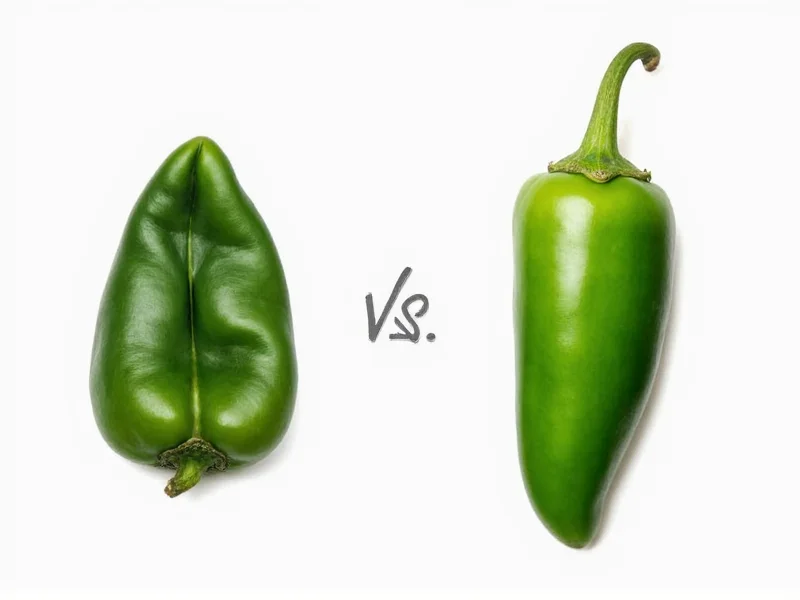When exploring Mexican cuisine, understanding the distinction between poblano pepper vs pasilla is essential for authentic flavor development. Many home cooks mistakenly believe pasilla is simply the dried form of poblano, but they're actually two distinct peppers with unique characteristics that significantly impact cooking results.
Origin and Botanical Background
Poblano peppers (Capsicum annuum) originated in Puebla, Mexico, which explains their name (poblano means "from Puebla"). These peppers start dark green and mature to deep red. When dried, they transform into anchos, not pasillas—a common point of confusion in the poblano pepper vs pasilla debate.
Pasilla peppers, by contrast, come from the chilaca variety (also Capsicum annuum) and are always used in their dried state. The name "pasilla" means "little raisin" in Spanish, referring to both their shriveled appearance and sweet, fruity flavor profile. Fresh chilacas are rarely available outside Mexico, which contributes to the frequent mistaken identity between poblano and pasilla peppers.
Physical Characteristics Compared
Understanding the visual differences is crucial when navigating Mexican markets or recipes specifying poblano vs pasilla pepper requirements.
| Characteristic | Poblano Pepper | Pasilla Pepper |
|---|---|---|
| Form | Always fresh (dried form is called ancho) | Always dried (fresh form is chilaca) |
| Shape | Broad, heart-shaped, 4-6 inches long | Long, slender, wrinkled, 6-8 inches long |
| Color | Dark green (fresh), deep red (mature) | Near-black with brownish-purple hue |
| Weight/Texture | Thick, meaty walls, heavy for size | Thin, brittle, papery texture |
Heat Level and Flavor Profiles
The heat comparison between poblano and pasilla reveals important culinary implications. Poblanos rate 1,000-2,000 Scoville Heat Units (SHU), placing them at the milder end of the spectrum—comparable to a bell pepper with just a hint of warmth. Their flavor is earthy with subtle grassy notes when fresh.
Pasillas range from 1,000-2,500 SHU, slightly hotter than poblanos on average. Their dried nature concentrates flavors, yielding complex notes of dried fruit, cocoa, and licorice. This makes pasillas better suited for mole sauces and complex stews where depth matters more than fresh pepper brightness.
Culinary Applications and Substitutions
Knowing when to use each pepper prevents recipe failures. Poblanos shine in dishes where texture matters: stuffed peppers (chiles rellenos), fresh salsas, and roasted vegetable medleys. Their thick walls hold up well to charring and stuffing.
Pasillas excel in blended applications: moles, adobo sauces, and braising liquids. Their dried form dissolves completely when rehydrated and blended, creating smooth, complex sauces without fibrous bits. This distinction is critical for authentic Mexican cooking with poblano versus pasilla peppers.
When substitution becomes necessary, consider these guidelines:
- Replace fresh poblanos with green bell peppers + pinch of cayenne for minimal heat
- Substitute pasilla with mulato or ancho chilies (not dried poblano) for similar flavor profiles
- Never use dried poblano (ancho) when a recipe specifies pasilla—they have distinctly different flavor compounds
Availability and Storage Tips
Fresh poblanos appear regularly in mainstream supermarkets, especially in regions with significant Mexican populations. Look for firm, glossy specimens without wrinkles or soft spots. Store them in the refrigerator's crisper drawer for up to three weeks.
Pasilla peppers typically appear in Latin American markets or specialty spice shops. Select ones with deep color and minimal cracking. Store dried pasillas in an airtight container away from light and heat for up to one year. For maximum flavor retention in poblano and pasilla pepper recipes, toast dried pasillas lightly before rehydrating.
Common Misconceptions Clarified
The most persistent myth in the poblano pepper vs pasilla discussion is that pasilla is simply dried poblano. This error likely stems from inconsistent labeling in some markets. Remember: dried poblano = ancho; dried chilaca = pasilla. Understanding this distinction prevents flavor imbalances in traditional recipes.
Another misconception involves heat levels. While both peppers fall in similar Scoville ranges, pasillas often taste hotter because their dried form concentrates capsaicin, and they're typically used in concentrated sauces rather than as a primary vegetable component.
Practical Recipe Guidance
When following authentic Mexican recipes, pay close attention to whether they specify fresh or dried peppers. A recipe calling for "chile pasilla" means the dried chilaca, while "chile poblano" indicates fresh poblano.
For beginners exploring the differences between poblano and pasilla peppers, try this simple test: prepare two versions of a basic salsa. Use roasted fresh poblano in one, and rehydrated pasilla blended with tomatoes in the other. The poblano version will be brighter and more vegetal, while the pasilla version will be deeper and more complex—demonstrating why these peppers aren't interchangeable in serious Mexican cooking.











 浙公网安备
33010002000092号
浙公网安备
33010002000092号 浙B2-20120091-4
浙B2-20120091-4